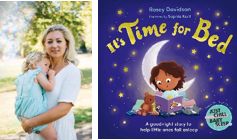
SWNYHEALTH by Marie Haaland
New York office – 646-873-7565 / [email protected]
Americans are officially abandoning attempts to be healthy until 2019, according to a new study. Americans are officially abandoning attempts to be healthy until 2019, according to a new study.
With the holiday season fast approaching, a new study into the health and diets of 2,000 Americans saw as many as 45 percent say they’re postponing any resolution to eat clean or lose weight until after the festivities.
Although a well-intentioned third have already started planning their New Year’s resolutions, it seems many Americans are taking a “start again in January” attitude to their health and planning to indulge themselves for the remainder of the year.
The research, commissioned by Herbalife Nutrition and conducted by OnePoll, delved into the true extent of holiday indulging and found the average person gains 6 pounds in holiday weight.
Just 12 percent will make it through the holidays without any weight gain at all, according to the research.
Where does that weight gain come from? Forty-four percent have eaten more than one Thanksgiving dinner in the same day and 30 percent have eaten to the point of feeling sick.
Four in 10 have devoured so much holiday food they’ve needed to loosen a button on their pants.
During the holiday season, the understandable inability to resist temptations and overindulge has also seen 55 percent break a diet for home-cooked holiday food.
The results showed Americans feel justified in eating all the holiday treats they want – even outside of the actual holidays. In fact, the average person will overeat on 13 separate days in the gap from Thanksgiving to the New Year.
Dr. John Agwunobi, co-president and chief health and nutrition officer at Herbalife Nutrition, says that holidays don’t have to throw off your healthy lifestyle. “Healthy snacking is a useful tool in combating overindulgence. Consuming protein-rich snacks before heading out to a holiday feast can help make you feel full, so that you don’t over indulge.
“Staying on track can be hard especially if you are tackling it on your own. Developing a support system of people who know your goals, strengths, and weaknesses can be extremely beneficial in maintaining a healthy lifestyle, especially during the challenging times of the year.”
Seventy-nine percent say they eat more sweets and treats at the end of the year – but even with this overeating, 54 percent believe they’ll be successful in staying healthy in 2019.
While we can all be guilty of overdoing it over the holidays, the good intentions are there – health-related New Year’s resolutions dominate for next year.
For the 34 percent who are already planning on making a New Year’s resolutions, the top resolutions are exercising more (71 percent), eating healthier (71 percent), focusing on self-care (55 percent), saving more money (54 percent) and learning a new skill or hobby (38 percent).
Agwunobi added, “While resolutions are a great way to kick start a healthy year, a healthy diet is a long-term solution that you’ll want and need to practice steadily – for days, weeks and months – for lasting results.”“For best results, stick to a balanced diet that isn’t overly restrictive and combine it with consistent exercise to help achieve your healthy resolutions. You can start this holiday season simply by parking at the farthest spot from the store or mall entrance, helping you rack up extra calorie burning steps.”
IN WHAT ASPECTS ARE PEOPLE LESS HEALTHY AT THE END OF THE YEAR?
Not eating healthy foods 72 percent
Not eating balanced meals 53 percent
Not exercising regularly 51 percent
Not sleeping a healthy amount 38 percent
Not keeping a consistent sleep schedule 35 percent
TOP HOLIDAY TEMPTATIONS
Pies/cakes 59 percent
Cookies/treats 57 percent
Chocolate 54 percent
Family/home cooking 51 percent
Side dishes (stuffing, mashed potatoes, etc.) 49 percent
TOP NEW YEAR’S RESOLUTIONS FOR 2019
Exercising more 71 percent
Eating healthier 71 percent
Focusing on self-care (mental health, sleep, etc.) 55 percent
Saving more money 54 percent
Learning a new skill or take up a new hobby 38 percent



















